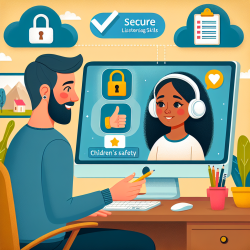As a practitioner dedicated to supporting the growth and development of children with hearing impairments, staying abreast of the latest research in pediatric audiology is essential. The advancements in this field not only broaden our understanding but also equip us with the tools to make a profound impact on our young clients' lives. The book "Pediatric Audiology" edited by Frederick N. Martin offers a comprehensive overview that can significantly enhance our practice and outcomes for children with hearing loss.
The research emphasizes the critical nature of early diagnosis and intervention in pediatric hearing loss. It highlights how understanding the etiology and pathology of hearing loss can inform more tailored and effective intervention strategies. For instance, by grasping the nuances of pre-natal and peri-natal etiologies of hearing loss, we can better anticipate the needs of our clients and adapt our therapeutic approaches accordingly.
Moreover, the book delves into the importance of integrating parents and home programs into the early management of hearing-impaired youngsters. This approach not only fosters a supportive environment for the child but also empowers parents to be active participants in their child's development. The emphasis on parent participation aligns with our mission at TinyEYE to create a collaborative, holistic therapy experience that extends beyond traditional settings.
Another pivotal aspect covered is the utilization of diagnostic procedures and the interpretation of test results to guide our therapy practices. The insights on electrophysiological indices of auditory function, for example, can significantly refine our assessment techniques, enabling us to develop more personalized therapy plans that address the unique challenges faced by each child.
The book also explores the often-neglected subject of counseling, presenting a realistic and sober approach to this critical aspect of therapy. It underscores the importance of total counseling by the clinical audiologist, which is crucial for addressing the psychological impacts of hearing impairment on the child and their family.
Lastly, the discussion on public school audiology provides valuable guidance on how to navigate the practical aspects of supporting children with hearing loss in educational settings. This includes the use of various forms of documentation and the development of job descriptions for school system audiologists, which can enhance the integration of audiological services within schools.
By incorporating the outcomes of this research into our practice, we can improve our skills, offer more effective interventions, and ultimately, contribute to the betterment of the lives of children with hearing loss. For those interested in exploring this topic further and enhancing their professional practice, I highly recommend diving into the original research paper. To read the original research paper, please follow this link: Pediatric Audiology.










